Drum and bass is a super dynamic genre of electronic music that thrives on fast tempos, deep basslines, and intricate drum patterns.
It’s all about creating high-energy tracks that make people want to move, combining heavy bass sounds, rolling drum breaks, and atmospheric elements to create an immersive sonic experience.
Plus, it includes epic drops, tight transitions, and unique sound design that keep listeners hooked from start to finish.
As a drum and bass music producer, learning the specifics (from sound selection to arrangement, mixing, and mastering) is super important.
That’s why we’re breaking down everything you need to know about how to make drum and bass, like:
- Understanding drum and bass structure ✓
- Choosing the right drum kits and sounds ✓
- Crafting powerful drum patterns ✓
- Designing sub-bass and mid-bass layers ✓
- Creating unique atmospheric elements and pads ✓
- Writing standout melodies and hooks ✓
- Mixing and mastering for clarity and impact ✓
- Using advanced music production techniques ✓
- Blending subgenres for unique styles ✓
- Much more about how to make drum and bass ✓
After reading this article, you’ll know everything about how to make drum and bass so you can create tracks that hit hard on any sound system and capture its essence.
Plus be able to create dynamic arrangements and work with effects like a professional.
This way, your drum and bass tracks will always have the energy, clarity, and creativity needed to stand out over your competition.
So, let’s dive in…
Table of Contents
- Drum and Bass: Quick Breakdown
- How to Make Drum and Bass: Step by Step
- #1. Understanding Drum and Bass Structure
- #2. Knocking Out the Perfect Drum Patterns
- #3. Bass Design and Sound Selection
- #4. Building Atmospheric Elements and Pads
- #5. Designing Leads and Melodic Elements
- #6. Drum and Bass Mixing & Mastering
- #7. Advanced Production Techniques
- How to Make Drum and Bass: Final Thoughts
Drum and Bass: Quick Breakdown

Drum and bass (DnB) is a genre of electronic music characterized by fast-paced breakbeats, usually between 160-180 BPM, heavy basslines, and syncopated rhythms.
When learning how to make drum and bass, you need to master several core elements, like:
- Driving drum sounds
- Powerful bass sounds
- A unique blend of atmospheric & melodic components
Anything to keep the energy flowing and your listeners hyped up.
But keep in mind, producing drum and bass music isn’t just about making beats 一 it’s about creating a story through sound design and arrangement.
Whether you’re leaning towards the soulful vibes of liquid drum and bass or the darker tones of neurofunk, we’re breaking down how to make drum and bass, step-by-step.
How to Make Drum and Bass: Step by Step
To produce a legendary drum and bass track, you need to carefully select your drum samples, create unique bass sounds, and design an arrangement that keeps listeners hooked from the first drop to the second drop. Here’s how to make drum and bass in eight clear steps that will guide you through the entire process…
#1. Understanding Drum and Bass Structure
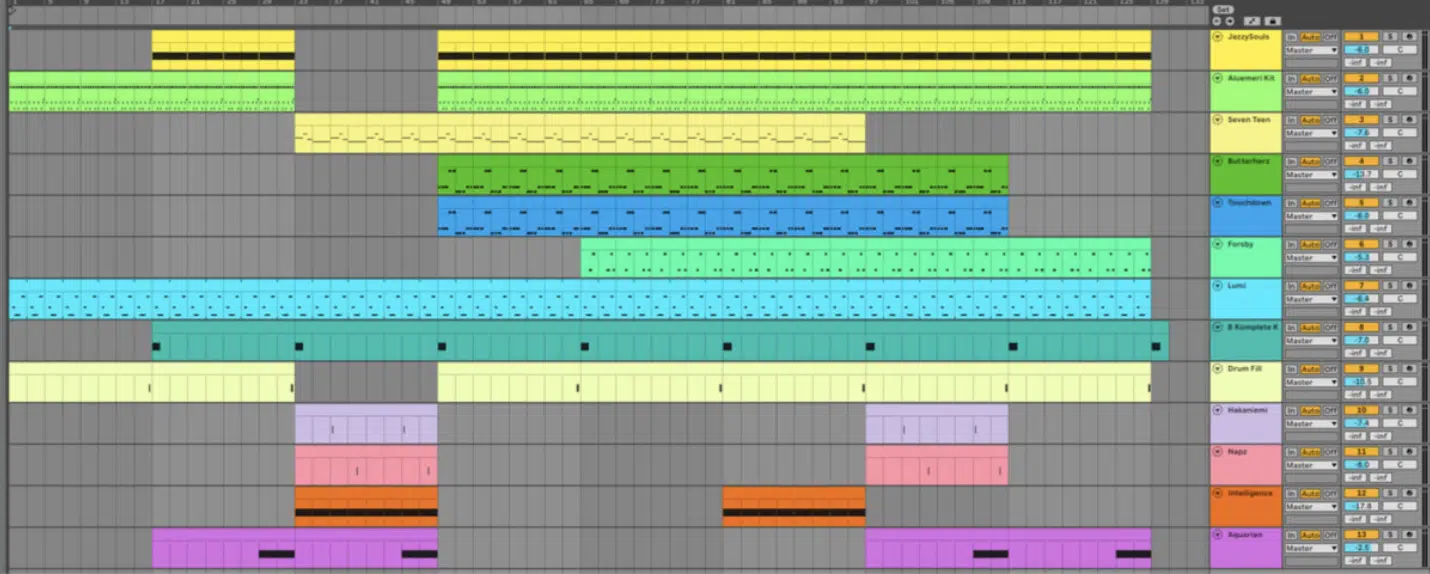
Before diving into the music production process itself, let’s start by breaking down the typical structure of a drum and bass track.
Most drum and bass tracks start with an atmospheric intro that sets the mood, introducing elements like pads, FX, or a subtle sine wave bass to build anticipation.
The intro usually leads into a build-up, often incorporating a catchy melody or percussive elements, before exploding into the first drop.
This is where the main elements (drums, bass, and leads) come in hot.
After the first drop, there’s usually a breakdown that strips the track down, often to just pads and ambient sounds, creating space for building tension before the second drop.
Knowing how to structure your track allows for better flow 一 making sure each part leads seamlessly into the next without losing energy or interest.
-
Pro Tip: Experimenting with Non-Traditional Structures
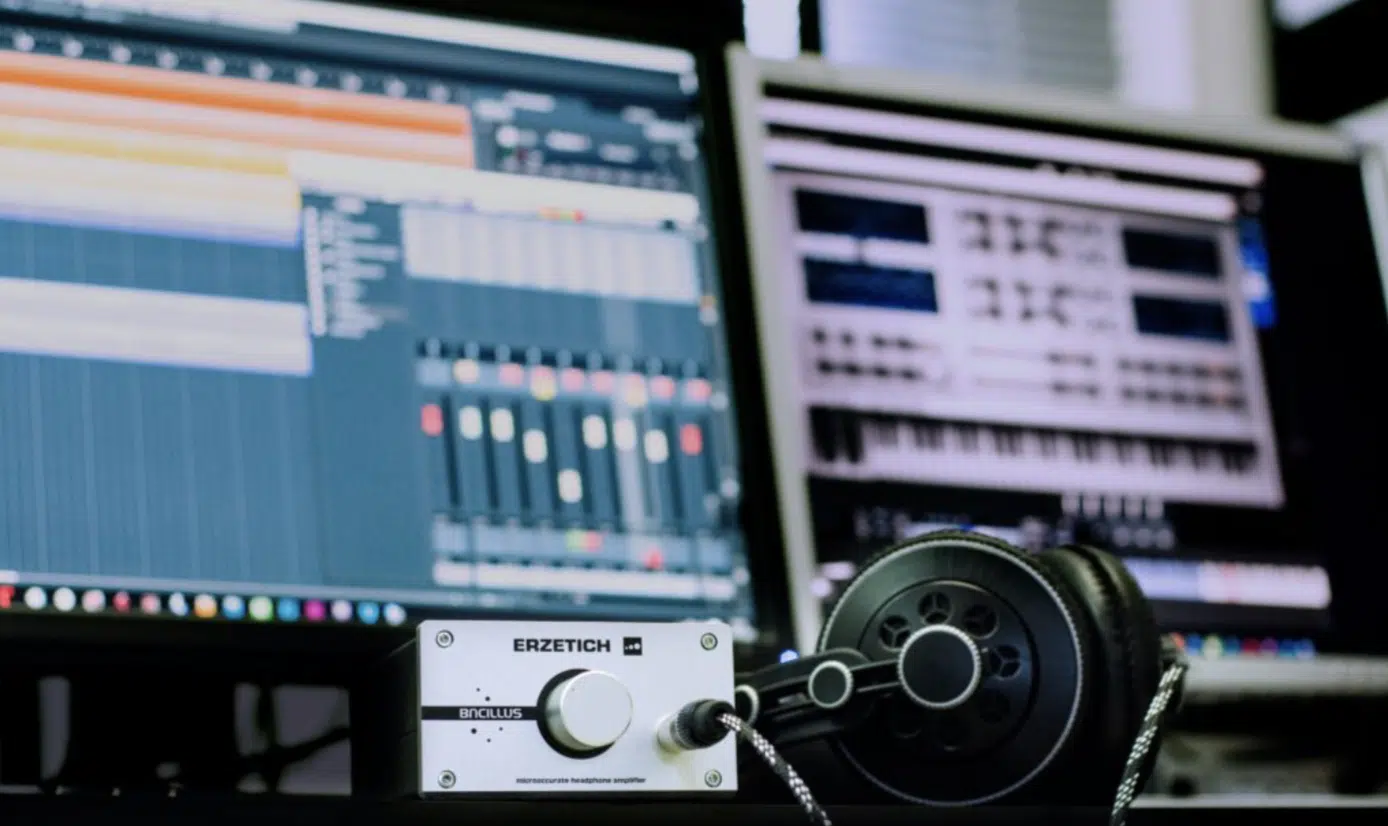
Experimenting with more unconventional song structure can take your drum and bass music to the next level (if done right, of course).
For instance, try starting with the bass sound instead of a typical drum intro, or use a time signature other than the standard 4/4 to create a unique rhythmic feel.
Playing with structure keeps your listeners on their toes and can help your track stand out in the crowded drum and bass scene.
#2. Knocking Out the Perfect Drum Patterns
When you’re learning how to make drum and bass, the drums are (obviously) the heartbeat. To create the perfect drum patterns, you’ll need to select the right drum kits, lay down powerful kicks and snares, and much more. So, let’s get into it.
-
Selecting Drum Kits for Drum and Bass
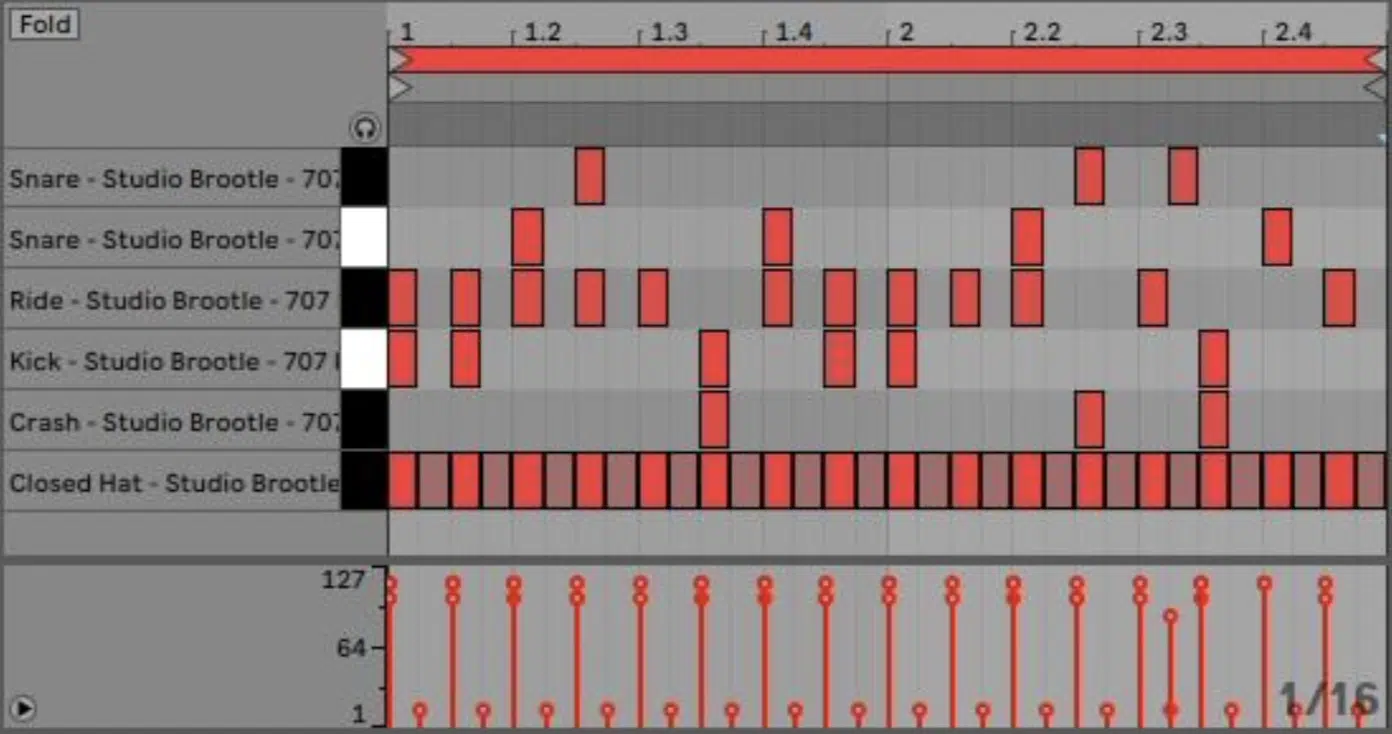
When selecting drum kits for drum and bass, look for a combination of classic breakbeats and clean one-shots that include kicks, snares, hi-hats, and percussive elements.
A good starting point is to use sampled breakbeats like the “Amen” break or “Funky Drummer” break for that authentic old school vibe to dance music.
These breaks provide a foundation of groove that you can chop and layer with modern, processed drum hits.
Make sure your drum kit has a variety of one-shots that range from punchy kicks to crisp snares so your drum patterns can be flexible.
Using different drum sounds like splashy ride cymbals or distorted hi-hats adds texture and keeps the drum patterns interesting throughout the track.
Also, consider adding top loops to fill in the higher frequencies and add more groove.
-
Designing Hard-Hitting Kicks and Snares
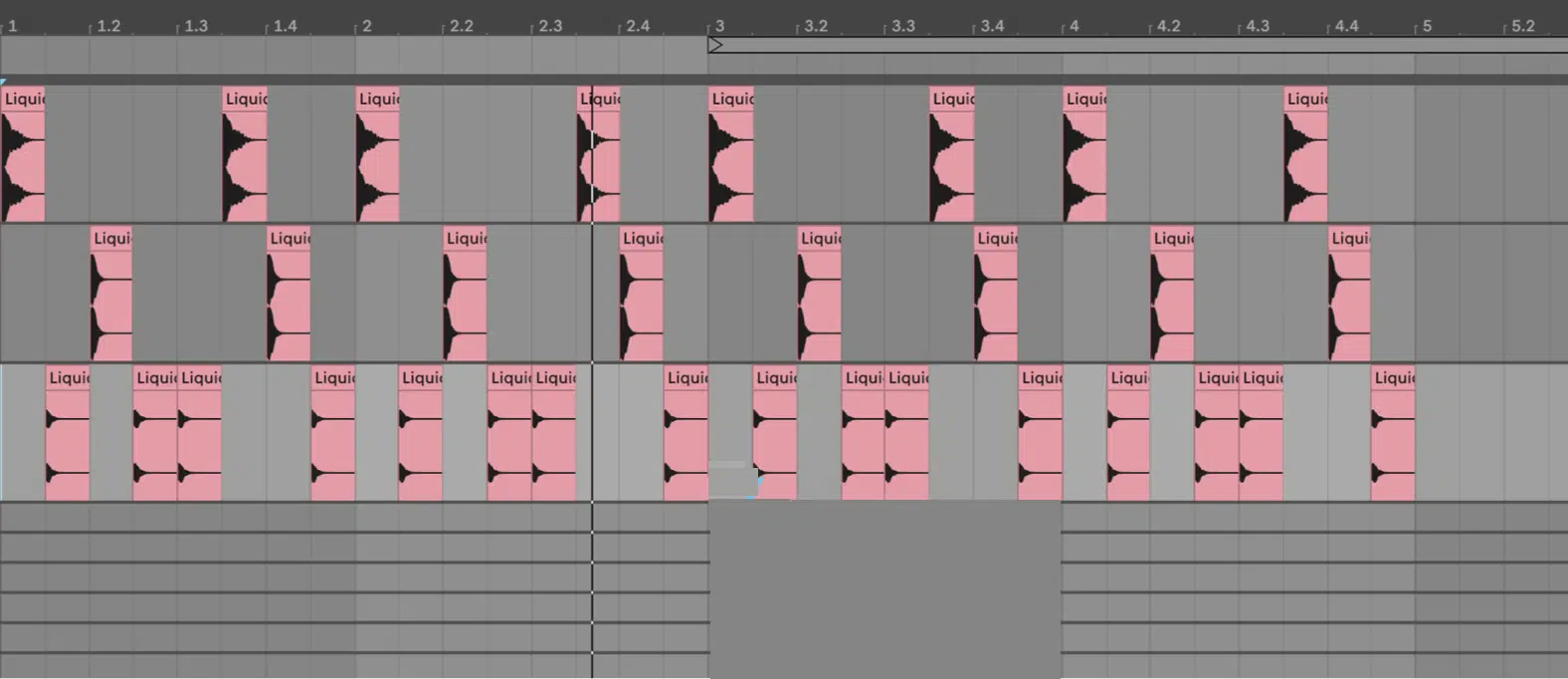
The kick and snare are the core of any drum and bass track, driving the rhythm and energy so people get hooked in off rip.
Start with a solid kick sample that has a fast attack and a clean, punchy low end.
I like to layer a subby kick with a more mid-range one-shot kick to fill out the frequency spectrum without muddying the mix.
For the snare, focus on a snappy transient with a bright top end to cut through the dense bass music.
You can also layer multiple snare samples, like a lower, thicker snare paired with a higher-pitched one.
Just make sure to use a high-pass filter on the higher snare to avoid frequency clashes, which you certainly do not want.
This layering adds character to your drum samples 一 creating a punchy, powerful drum sound that is essential for drum and bass production.
-
Pro Tip: Layering Techniques for Powerful Drums
Layering isn’t just for bass… It’s super important for your drum sounds too. Try combining an acoustic kick with an electronic kick to blend an organic feel with electronic music precision. This hybrid approach will give your drums samples more depth and make them stand out in the mix even more
-
Creating Rolling Breakbeats and Breaks
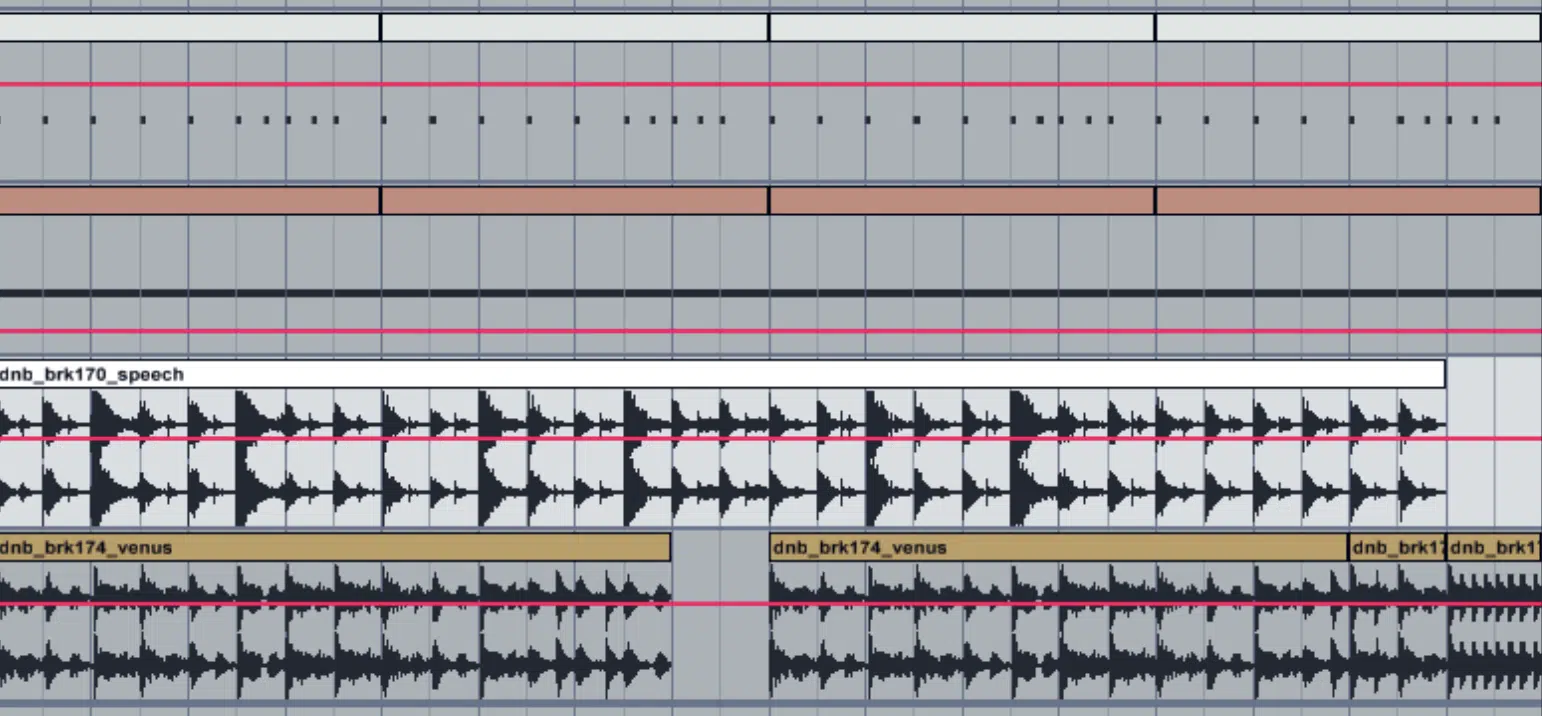
Rolling breakbeats are a true hallmark of drum and bass, providing a dynamic flow that drives the track forward.
Start by slicing classic breaks (a sampled breakbeat) into individual one-shots, allowing you to rearrange them into exciting new patterns.
For example, take an “Amen” break, slice it into pieces, and then rearrange the hits to create a custom loop that fits your track’s vibe.
Adding ghost notes, which are soft, off-beat drum hits (broken down in the following section), helps to create that rolling, continuous feel.
It’s perfect for liquid drum and bass or other subgenres that fit the vibe.
You can add extra layers like hats or other FX to enhance the break and give it more life 一 adding a modern touch while still retaining that classic drum and bass feel.
Side note, if you’d like to learn everything about breakbeats, we’ve got you covered.
Pro Tip: Try adding unique drum fills or glitch effects before the first drop or second drop to build excitement.
Make sure your edits enhance the cohesive piece and don’t disrupt the overall flow, this is the key when you’re learning how to make drum and bass.
By carefully slicing and editing, you can create highly original and engaging drum and bass tracks.
-
Using Ghost Notes and Syncopation for Groove
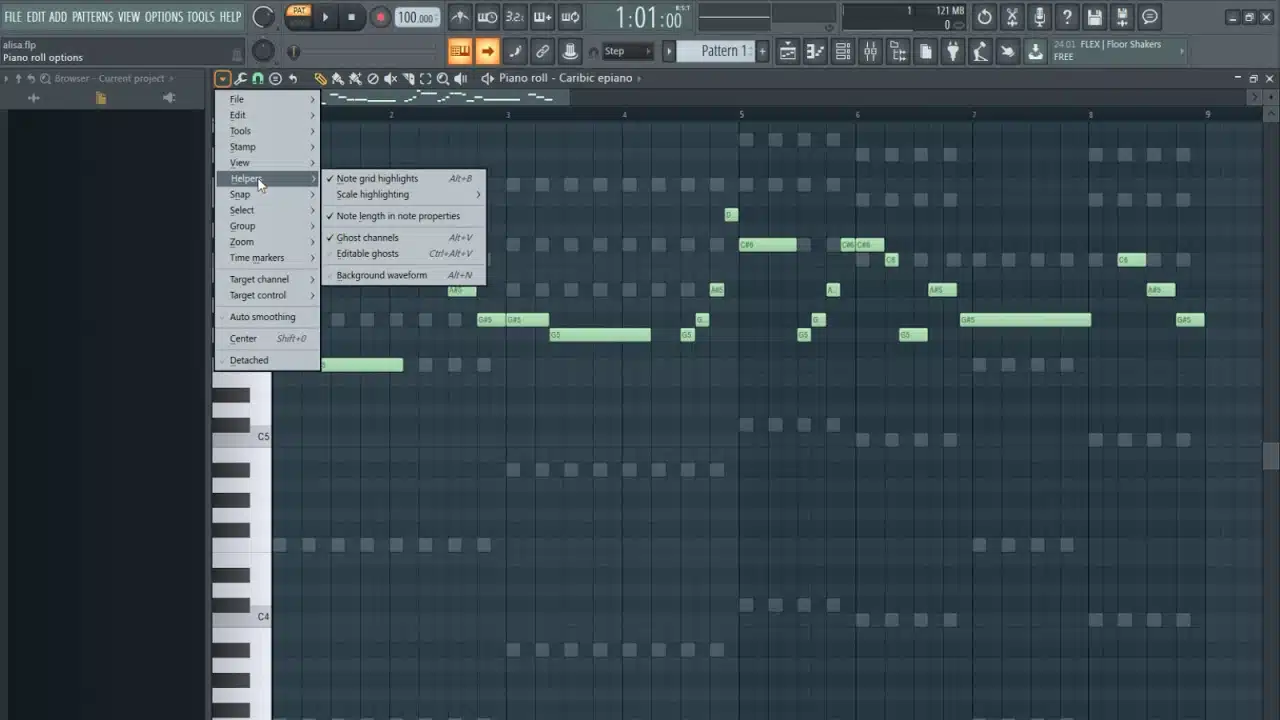
Ghost notes are softer drum hits that add complexity and groove to your drum patterns.
These are super effective on the extra snare or hi-hat, where they can provide subtle rhythmic fills that make the drums feel more alive.
For example, in the empty space between your main/first snare hits, try adding some soft, quick ghost snares to build a more intricate rhythm.
Syncopation (where beats are played off the main pulse) creates unexpected rhythms that can make your track sound good and more engaging/less predictable.
Also, using a slight swing or shuffle on your new MIDI track can also add a more human feel to the programmed drums.
#3. Bass Design and Sound Selection
The bass sound is the soul of a drum and bass track. Knowing how to design and layer bass sounds when you’re learning how to make drum and bass tracks is key for creating that powerful, rumbling low-end that defines the genre.
-
Understanding Different Types of Bass Sounds in Drum and Bass
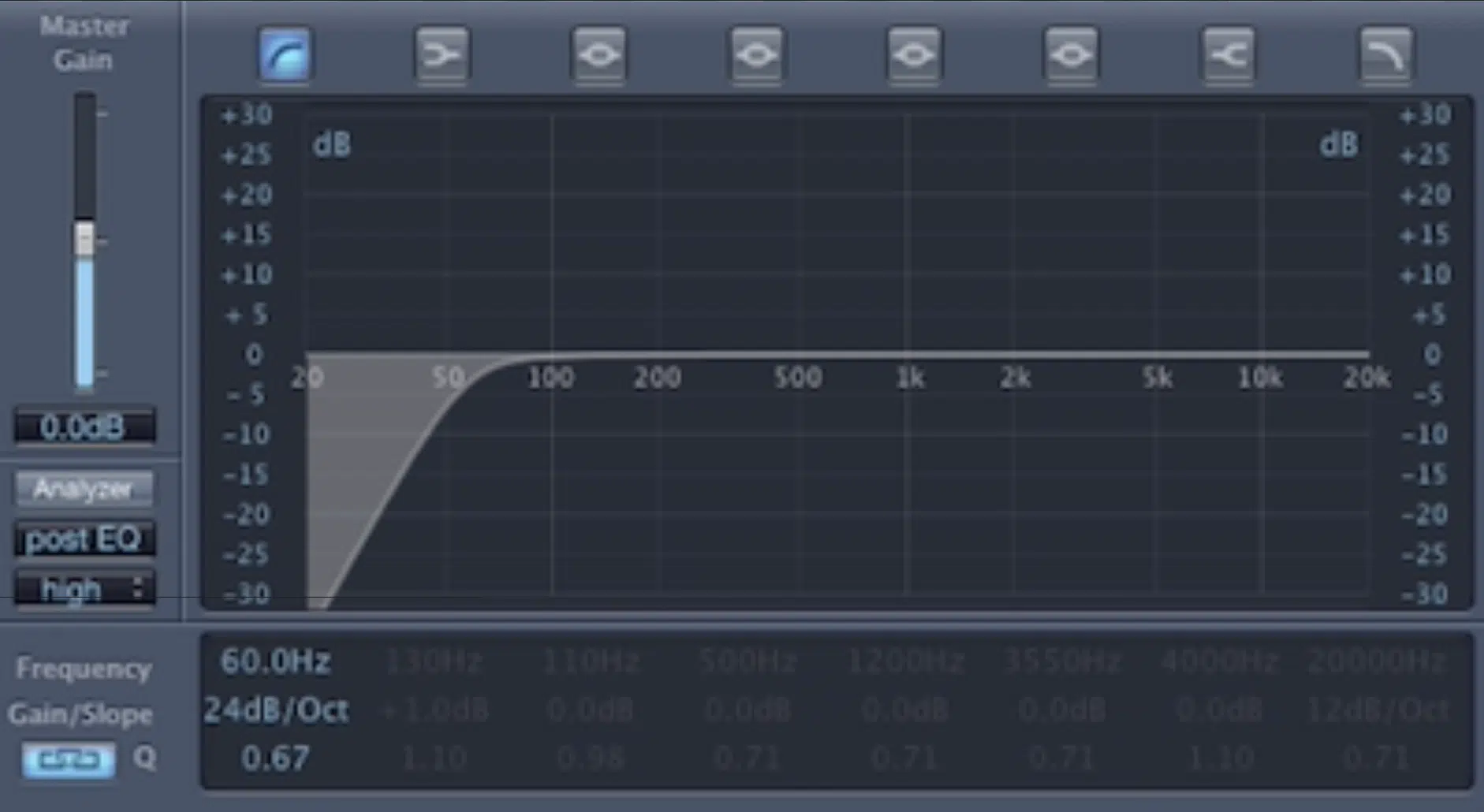
Drum and bass music is famous for its diverse bass sounds, ranging from deep sub-basses to growling mid-basses and everything in between.
So, when you’re learning how to make drum and bass, understanding these different bass types is non-negotiable.
Sub-bass is typically a clean sine wave or triangle wave that occupies the lowest frequencies of the track, creating that room-shaking effect.
On the other hand, mid-bass often uses FM synthesis or wavetable synthesis to create growls, wobbles, or reese bass sounds that add texture and movement.
To get a fuller bass sound, layer sub-bass with a more aggressive mid-bass.
For example, I often layer a deep sine wave sub with a gritty wavetable mid-bass to provide both weight and character to the low end.
This combination makes sure the bass production fills out the frequency spectrum and maintains energy throughout the track.
-
Pro Tip: The Perfect Reese Bass
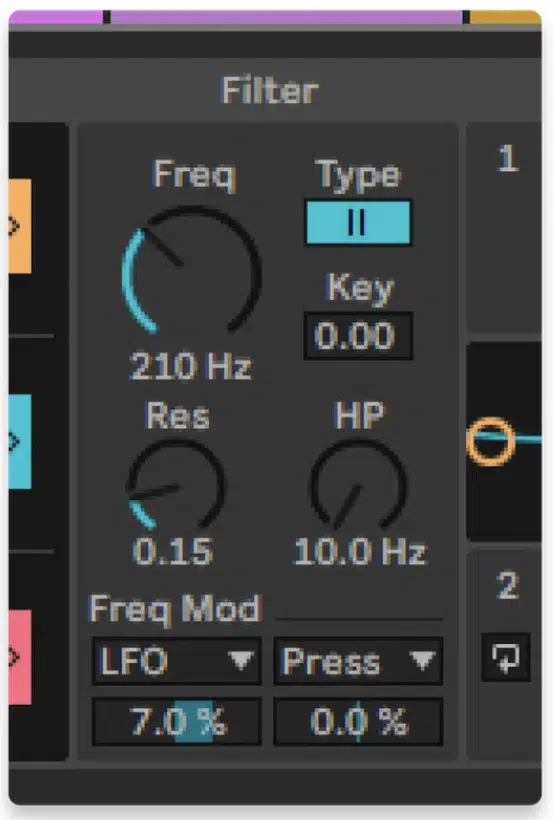
The Reese bass is a staple in drum and bass, known for its thick, modulated sound. To create a perfect Reese bass, start with two detuned saw waves in unison voices and use a low-pass filter to shape the sound. Automate the filter cutoff and add a touch of distortion or saturation to give it that signature growl that cuts through the mix.
-
Designing Sub-Bass and Mid-Bass Layers: Breaking it Down
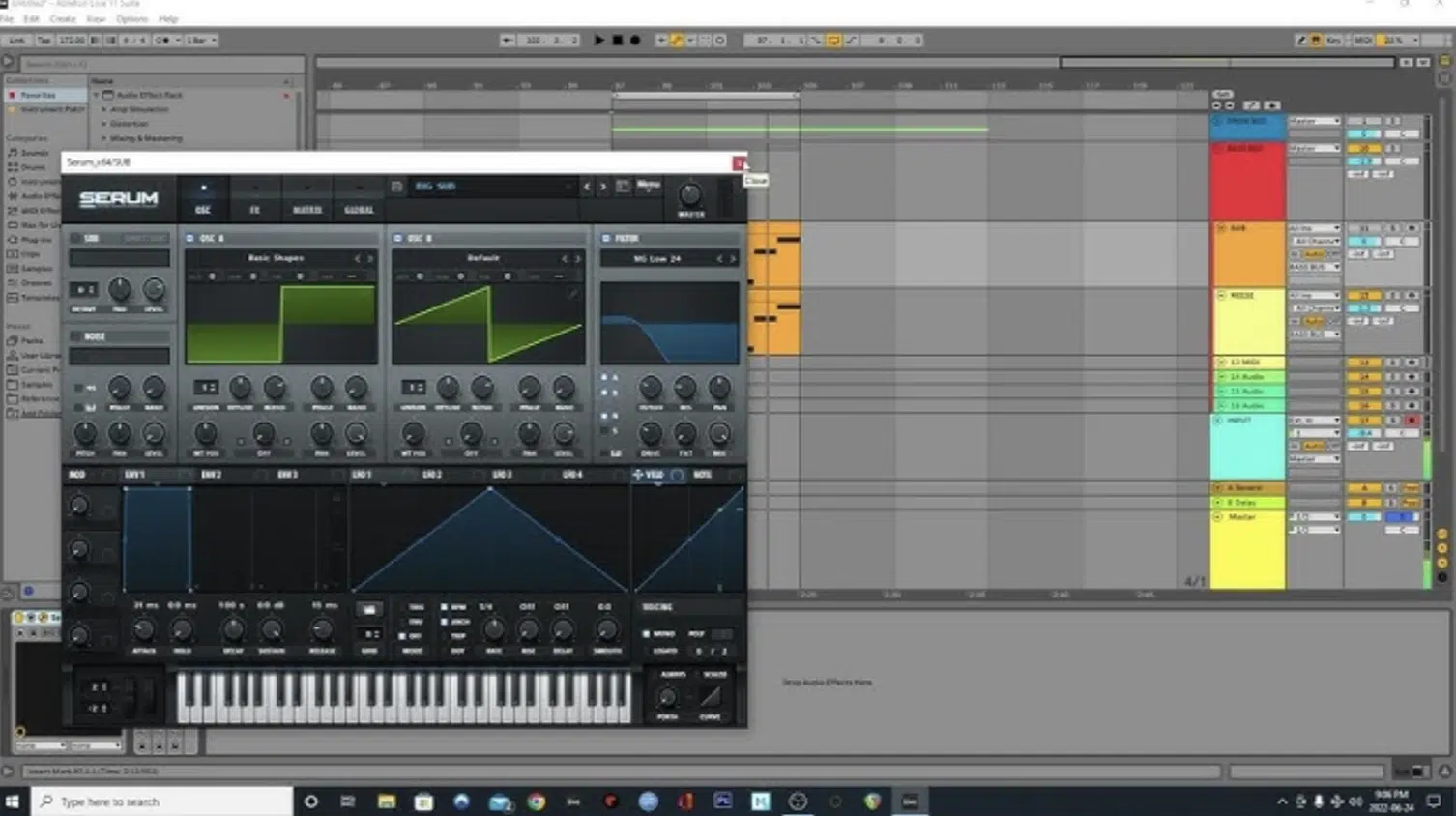
For a killer, impactful drum and bass track, having both sub-bass and mid-bass layers is crucial (as we touched upon a few sections ago).
Start with a sub-bass layer using a sine wave to provide a clean, deep foundation that sits around 40-60 Hz on the frequency spectrum.
Make sure this sub-bass has a fast attack (typically around 10ms) to punch in without delay and a long release (300-600 ms) to create a smooth, sustained rumble.
Next, add a mid-bass layer with more harmonic content; FM synthesis is a great way to get that dirty, textured bass sound common in neurofunk or techstep.
Use a plugin like Serum or Massive to create this mid-bass and experiment with modulating the wavetable position or filter cutoff to add movement.
To add movement and variation, start with two or more oscillators slightly detuned and use modulation techniques like modulating the:
- Wavetable position
- FM amount
- Filter cutoff
Use LFOs synced to the tempo to create rhythmic pulsing or wobbling effects, which can make the mid-bass feel more alive and constantly evolving.
To make it grittier, apply effects such as distortion, chorus, or phaser to add depth and stereo width.
The key to blending these layers is using a high-pass filter on the mid-bass to avoid clashing frequencies; set the cutoff around 80-100 Hz to keep it out of the sub-bass’s territory.
And, of course, sidechain compression to ensure the kick and bass work together without muddiness…
Use a compressor with a fast attack (around 5-10ms) and moderate release (50-100ms) to duck the bass quickly when the kick hits 一 keeping the low end punchy and clear.
Also, use a spectrum analyzer to visually check for any frequency clashes or build-ups, and adjust accordingly to maintain a balanced/powerful low end in your drum and bass track.
#4. Building Atmospheric Elements and Pads
Next step to learn how to make drum and bass is all about atmospheric elements and pads. They can set the entire mood of your drum and bass track. These new sounds will add depth, space, and texture to enhance the overall vibe.
-
Creating Texture with Ambience and Pads
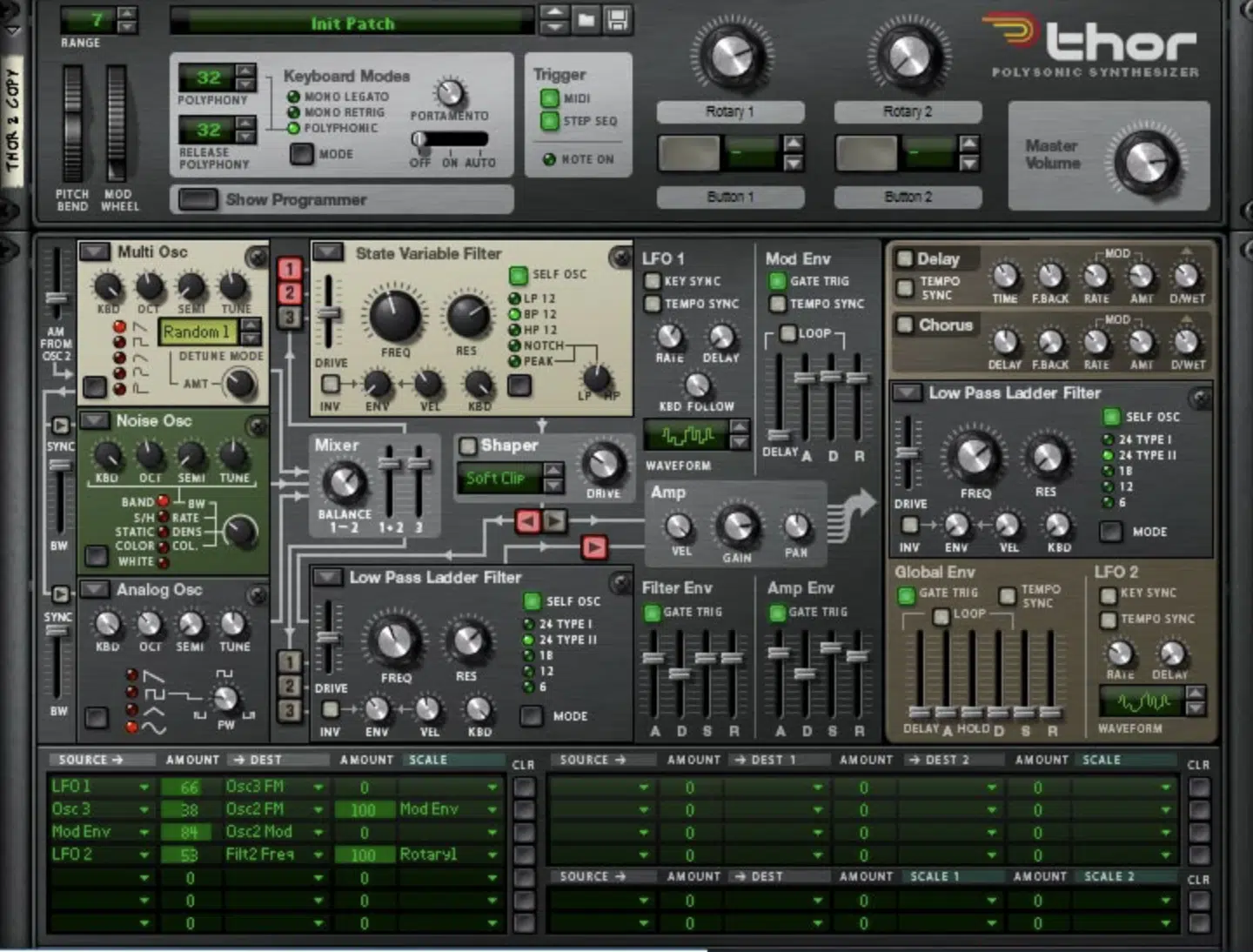
Adding ambient textures and pads can transform a basic drum and bass track into a more immersive experience.
Start by layering atmospheric pads that complement your bass music, which can be soft, evolving pads that fill the stereo field without overpowering the drums and bass.
Choose pads that have a slow attack (around 500 ms to 1 second) to gently fade in, and a long release (2 to 4 seconds) to allow the sound to linger and blend smoothly.
I often use Omnisphere or Alchemy to create pads with slow attack and long release times to build a smooth, lush backdrop.
You can also layer in some background noise like vinyl crackle or rain sounds to add even more texture.
These subtle elements provide a sense of depth and can make your drum and bass track feel more complete and professional.
Remember to use a high-pass filter to roll off any low-end frequencies below 150-200 Hz from pads to avoid clashing with your bass sounds.
-
Adding FX and Soundscapes for Depth
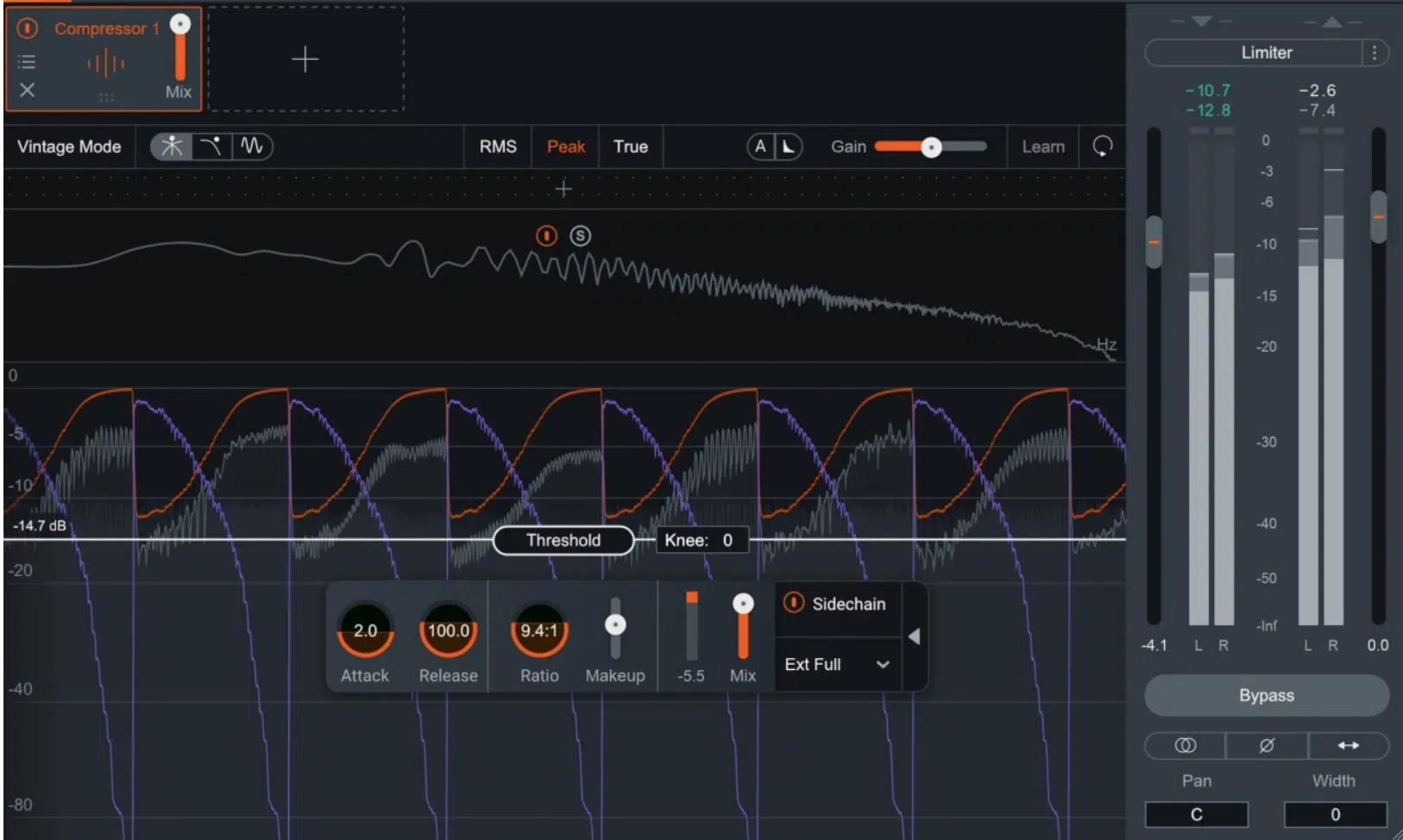
When you’re learning how to make drum and bass, you’ll need to get familiar with soundscapes and FX.
They will add much-needed depth and movement to your drum and bass music, making it more engaging.
You’re going to create space and atmosphere by using reverb and delay creatively on:
- One-shots
- Vocal samples
- Any percussive element
For example, using a long reverb tail on a vocal chop or synth stab can fill in the background and create a sense of dimension.
Soundscapes, like field recordings of cityscapes, forests, or mechanical noises, can be layered subtly beneath your main elements to give the new track an organic feel.
For additional impact, use other sounds like risers, white noise sweeps, and downshifters to create tension and release during transitions.
Make sure these FX are tastefully done to complement the track without becoming overwhelming or straight up whack, like any good producer would.
NOTE: Also, try using field recordings and foley sounds to add yet another unique layer to your drum and bass track, and spice things up.
#5. Designing Leads and Melodic Elements
Designing leads and melodic elements is a key step in how to make drum and bass tracks that really pop and blow people’s minds. The right combination of synths, melodies, and sound design techniques can turn a good track into a memorable one, so let’s break it down.
-
Choosing The Right Synths and Sounds for Drum and Bass Leads
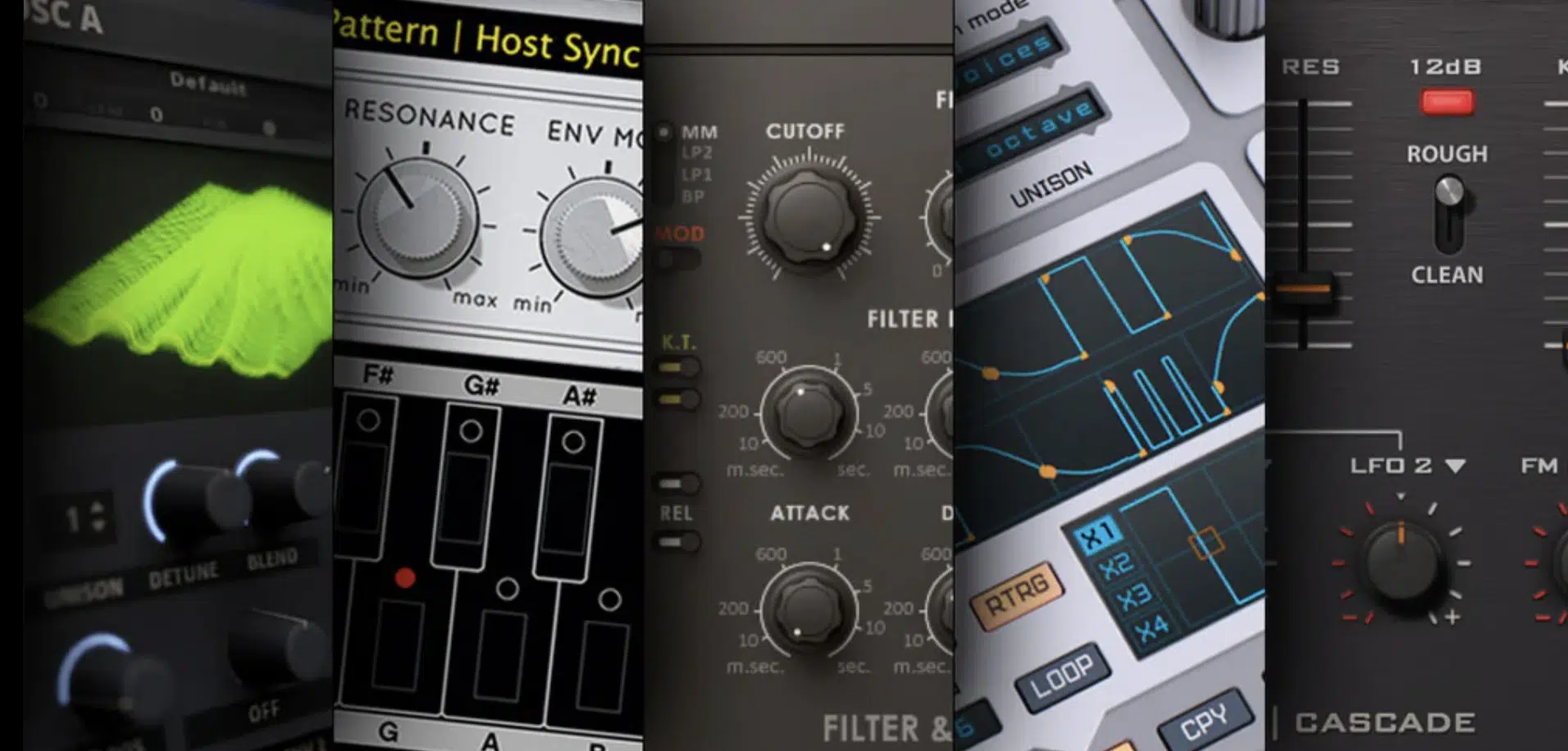
When considering how to make drum and bass leads, the choice of synths and sounds can make or break the track, no joke.
Drum and bass music relies on aggressive, gritty leads that cut through the mix or smooth, flowing melodies for a more liquid funk vibe.
For instance, most liquid producers create edgy, modulated leads by modulating the wavetable position and adding effects like distortion, bit-crushing, and chorus.
A good trick is to use many unison voices with slight detuning to add width and richness to the lead sound.
For example, set the unison to 8-16 voices and adjust the detune amount to around 0.05 to 0.1 to avoid phase issues while still adding a lush, wide stereo effect.
For a more ethereal, atmospheric lead, consider using softer synths like Pigments or FM8 to create dreamy, evolving patches.
Start with a sine or triangle wave for a soft, warm foundation, and layer it with a high-pitched, shimmering pad or bell-like tone.
You can then use FM synthesis or granular synthesis as we talked about to add subtle textures that evolve throughout the track.
These softer sounds can balance the heavy bass and sharp drum sounds 一 adding a new dimension to the track.
-
How to Make Drum and Bass Melodies/Hooks Stand Out
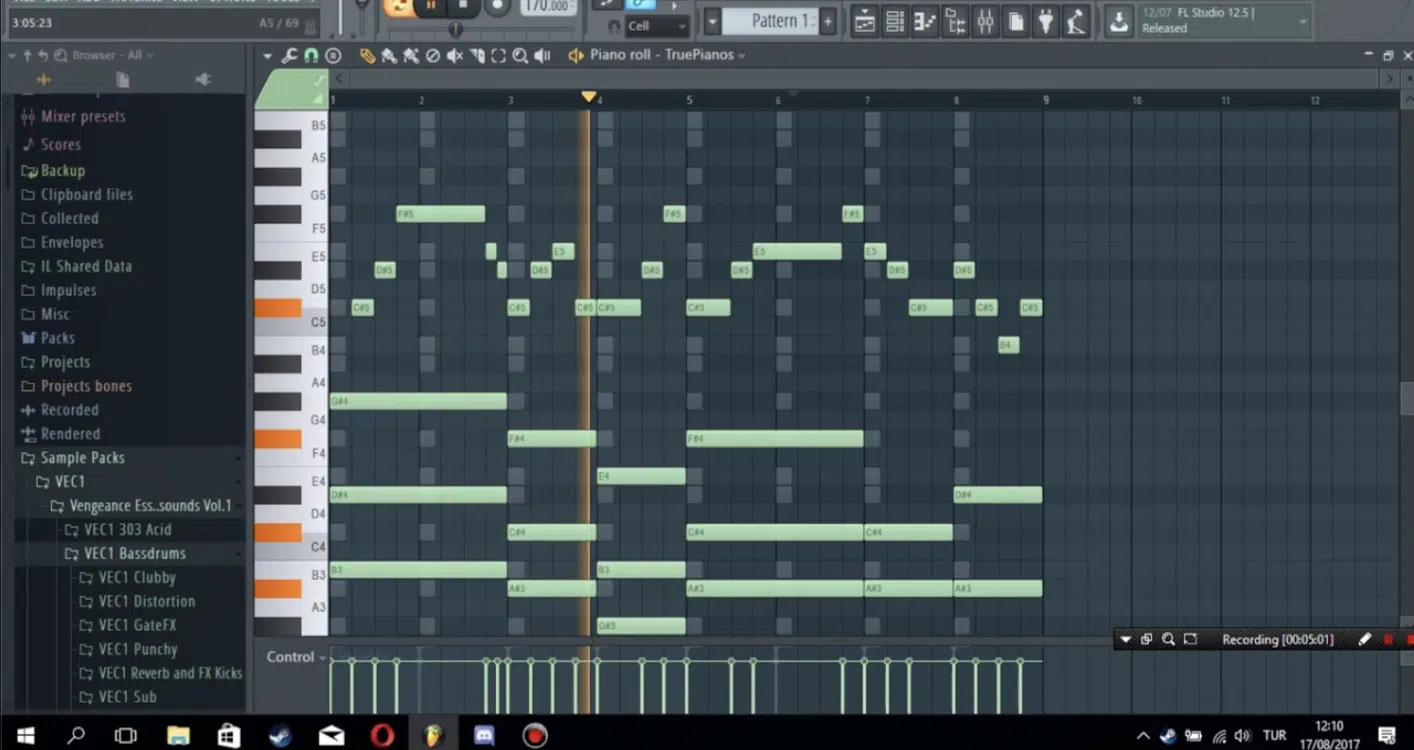
Laying down catchy melodies and hooks is a super important aspect of how to make drum and bass tracks engaging and mesmerizing.
A strong melody or hook can be as simple as a 4- or 8-bar loop that repeats with slight variations to maintain interest.
Start by choosing a scale or mode that complements the mood of your track…
Minor scales often work well for darker, more intense drum and bass music, while modal scales like Dorian or Phrygian can add a unique twist.
When writing the melody, think about incorporating syncopated rhythms and triplets to create more movement and groove.
For example, I often use a low note in my melody that follows the bass line to create a call-and-response effect with the main bass sound.
Layering these melodies with different sounds (like a plucky synth and a detuned pad) can also add depth and richness, so keep that in mind when you’re learning how to make drum and bass.
#6. Drum and Bass Mixing & Mastering
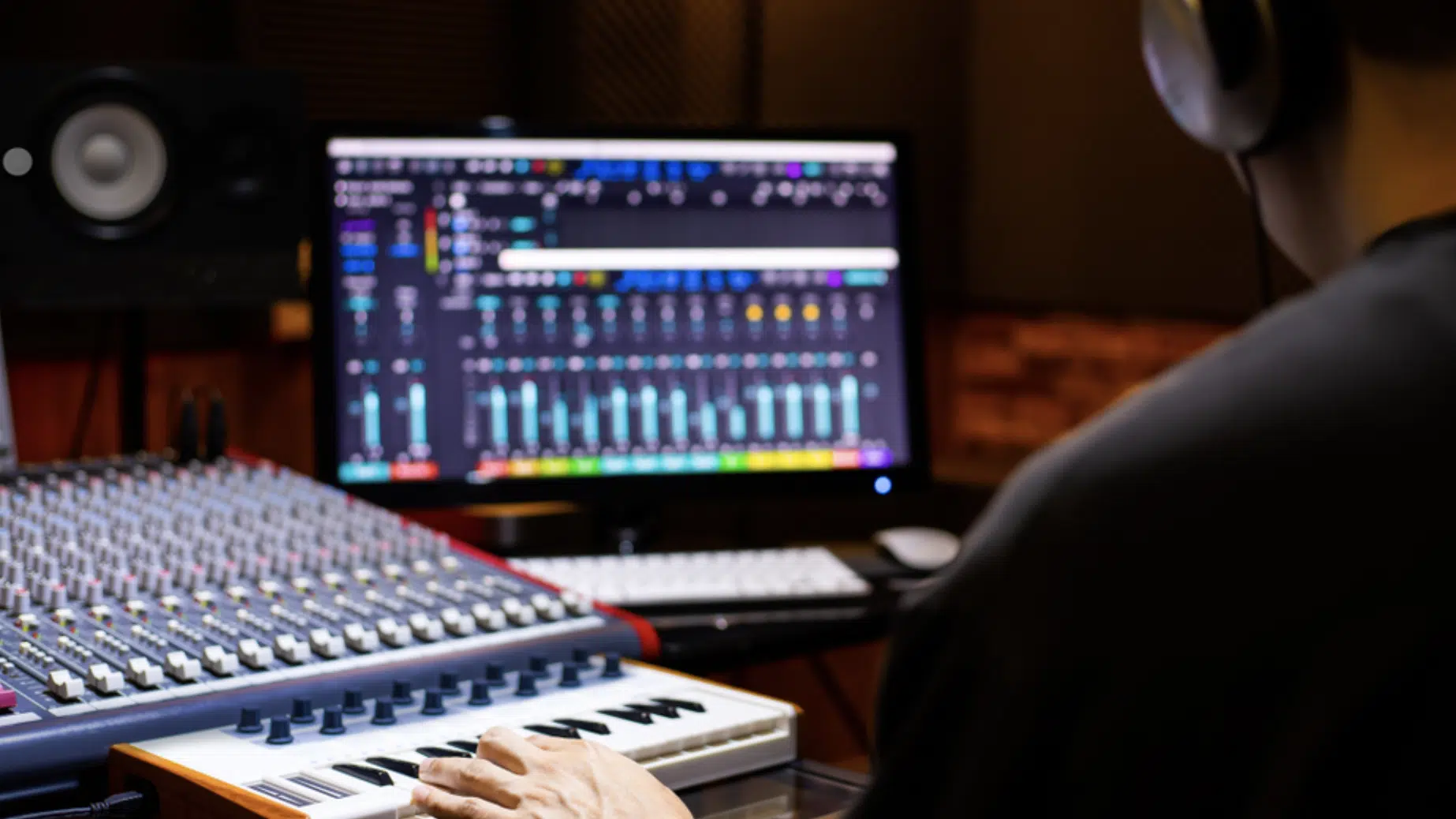
Mixing and mastering are the last essential steps in how to make drum and bass tracks sound polished and professional (ensuring clarity and impact for every element).
Start by focusing on the kick and sub-bass, using sidechain compression to create space and a balanced low end.
Keep the kick around 50-60 Hz and high-pass the sub-bass below 30 Hz.
Use EQ to carve out problem frequencies between 200-500 Hz and apply stereo widening on the highs to create a full, spacious mix.
Reverb and delay should be used sparingly on snares and FX, with high-pass filters to keep the low end clean.
For mastering, use multiband compression on the low end and use a brick-wall limiter to bring up the overall loudness.
You should aim for a final integrated LUFS of around -6 to -8.
When you’re learning how to make drum and bass, always analyze your mix on multiple systems and use reference tracks.
It will ensure your drum and bass tracks translate well across all playback environments.
#7. Advanced Production Techniques

Resampling
To master how to make drum and bass that stands out, advanced production techniques like resampling can help you create unique sounds and textures.
Start by resampling bass or lead sounds into audio, then manipulate them with pitch-shifting and time-stretching for a fresh, evolving feel.
Incorporate other elements from drum and bass subgenres, such as chopped jungle breaks or smooth liquid basslines, to add depth and variety to your tracks.
Blend genres like hip-hop or dubstep for a unique/particular style, and again, always use reference tracks to keep your mix and arrangement on point.
-
Pro Tip
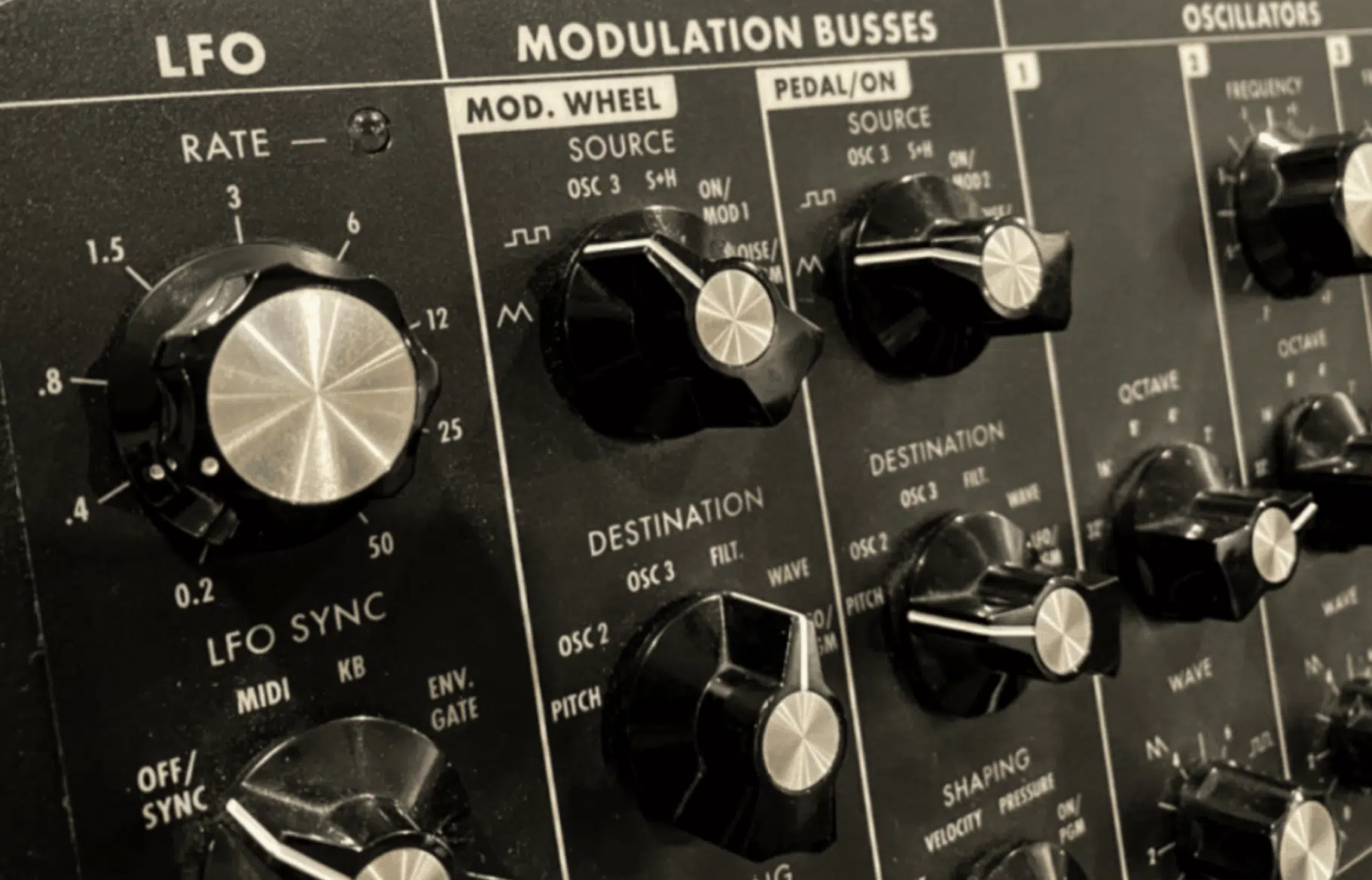
When learning how to make drum and bass, MIDI effects like arpeggiators and chord progression generators can add complexity to melodies, while modulators like LFOs and step sequencers can create dynamic movement.
Experimenting with these techniques will help you push your sound further and keep your drum and bass tracks engaging and innovative.
How to Make Drum and Bass: Final Thoughts
Mastering how to make drum and bass requires a deep understanding of drum patterns, bass layering, sound design, and mixing techniques that bring it all together.
By honing these skills, you can create tracks that are both impactful and memorable, standing out in the competitive world of electronic music production.
To really enhance your drum and bass tracks, this Dubstep & DnB MIDI Chord Collection is absolutely invaluable.
It features 200 professionally crafted MIDI files, including chord progressions, melodies, and basslines specifically designed for drum and bass and dubstep.
These MIDI files provide a strong foundation for creating melodic and harmonic elements so you can easily drag and drop them into your DAW and customize them to fit your unique style.
Whether you’re shooting for a dark, aggressive sound or a more melodic, liquid vibe, this collection can help spark creativity and streamline your workflow altogether.
So, with these advanced techniques and tools at your disposal, you have a solid understanding of how to make drum and bass that’s unique, polished, and professional.
Just remember to keep experimenting, fine-tuning, and pushing the boundaries of your sound, and soon, you’ll be knocking out killer drum and bass tracks all day.
Until next time…







Leave a Reply
You must belogged in to post a comment.